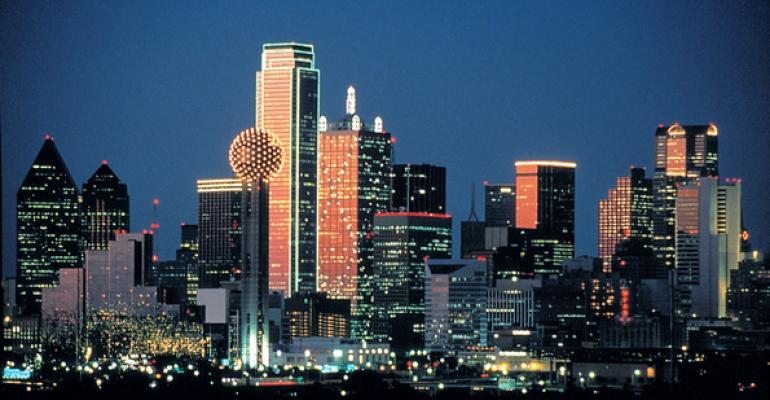Tens of thousands of new apartments are scheduled to open this year in Dallas-Fort Worth—one of the busiest cities in the U.S. for new apartment construction.
A strong, diverse local economy is helping Dallas absorb those new units. Even though the vacancy rate continues to rise towards 9.0 percent, rents are still growing faster than inflation.
“Dallas is more than the energy sector,” says Tara Jeffcoat, senior research analyst for commercial real estate data firm Yardi Matrix. “It serves as a management and financial hub for the energy region, with strong year-over-year growth in professional services, leisure, and financial sectors.”
Construction booms in Dallas
Developers continue to plan new apartment projects in Dallas-Fort Worth. “Our market is facing peak supply,” says Daniel Baker, senior vice president with the Dallas multifamily team at real estate services firm CBRE.
Since 2010, developers have already opened more than 120,000 new apartment units in the metropolitan area, making it one of the fastest-growing apartment markets in the U.S., according to research firm CoStar. That includes more than 24,000 new apartments that opened during the year that ended in June 2019. Another 31,000 new apartments were under construction at the end of June.
Dallas-Fort Worth is the third busiest market in the U.S. for new apartment construction, relative to the number of existing apartments, according to RealPage Inc., a provider of property management software and services. Only Seattle and Charlotte are busier. Developers had 34,893 new apartments under construction in the Dallas-Fort Worth metropolitan area at the end of 2018—or about 4.7 percent of existing inventory, according to RealPage.
With so many new units in the works, investors are finally becoming more cautious. Banks are less enthusiastic about making new loans on construction projects. “New construction assets have been more difficult to transact compared to value-add and workforce opportunities, where we have experienced the deepest pool of capital,” says Baker.
The flood of new units pushed the vacancy rate to 7.9 percent in June 2019. That’s up from a low point close to 6.0 percent at the beginning of 2016. Vacancy is expected to keep rising towards 9.0 percent through 2020, and will likely move past 9.0 percent in 2021 and 2022, according to CoStar.
Despite rising vacancy rates, rents are still rising faster than inflation in Dallas, at an average rate of nearly 3.0 percent per year, CoStar estimates.
“Rent growth cooled due to increased pricing pressure of new units, and occupancy dipped due to new deliveries,” says Paul Hendershot, director of market analytics for CoStar Group. “But both remain stable as the market digests new product.”
Dallas' strong economy helps absorption
The apartment market in Dallas is powered by a diverse economy that today is supported by more than just the fossil fuel business.
"Dallas is not dependent on energy," says Edward Tszeng, a field research analyst at CBRE. “In terms of job growth, it is expanding broadly across virtually all major private sector industries at a far faster pace than the U.S. as a whole.”
Employers increased the number of jobs in the local economy by almost 110,000 over the last year, and the unemployment rate is hovering around 3.0 percent, according to data from CoStar. “Dallas-Ft. Worth’s economy is robust and proving extremely resilient,” says Hendershot.
As a result of a strong job market, the population of Dallas-Fort Worth grew by 17.1 percent between 2010 and 2019. That’s nearly three times the growth of the U.S. population overall, according to data from the U.S. Census. And the local economy is projected to keep growing, likely adding another 700,000 new jobs through 2030, according to CBRE.
The strong economy continues to attract investors to Dallas’ apartment properties. “Capital still favors DFW as a high growth Sunbelt market,” says Baker. “Cap rates have remained aggressive for investment opportunities.”

